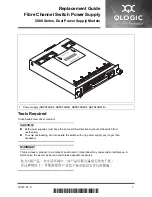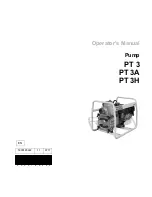
Page 12
BUTT JOINTS
See Figure 9.
A butt joint is one of the weakest joints in woodworking.
This type of joint is mating the end grain of one board with
the edge grain of another. The bonding of glue on this type
of surface is poor. However, by using biscuits you can
create a very strong joint that gives a mortise-and-tenon
effect.
HOW TO MAKE BUTT JOINTS
Unplug your plate joiner.
Place the two pieces of wood to be joined on a level
workbench. Align them against each other in the
arrangement in which they will be assembled.
Using a square, determine the location of each biscuit
spline joint and mark the center of each joint by drawing
a line across the edges of the two boards.
Loosen height adjustment knobs and set fence angle at
90
°
.
Slide the fence up or down until the indicator point is
aligned with the desired dimension on the scale.
REMEMBER:
The scale indicates the height of the
fence from the center of the blade.
Tighten height adjustment knobs securely.
Select the correct depth of cut setting to match the
biscuit size you are planning to use. We suggest that you
make a test cut in a scrap piece of wood from the same
workpiece if possible.
Clamp workpiece securely so that it will not move during
the cut.
Plug your plate joiner into power supply and prepare to
make your first cut. Grasp and hold your plate joiner
securely with both hands by the front and rear handles.
Place the fence against the board and align the indicator
marks on the fence with the centerline mark(s) on the
board.
Depress the switch trigger to turn the power on your plate
joiner, then push it forward to extend the blade into the
wood.
When the base assembly bottoms out against the depth
of cut adjustment knob setting, pull back releasing
pressure on the spring. Blade will retract from biscuit
slot.
Repeat this procedure for cutting the slot in the mating
workpiece.
OPERATION
Once all biscuit slots have been cut, place a biscuit in
each joint and dry assemble the workpieces. Make sure
each joint lines up and fits.
Finally, disassemble the workpieces and place a bead of
glue in each slot. Also, spread a bead of glue over the
entire surface of the joint. Reinsert the biscuits and
assemble the workpieces.
See Figure 9.
Clamp workpieces together until the glue sets up.
Finally, disassemble the workpieces and place a bead of
glue in each slot. Also, spread a bead of glue over the
entire surface of the joint. Reinsert the biscuits and
assemble the workpieces.
See Figure 8.
Clamp workpieces together until the glue sets up.
Fig. 10
Fig. 9
BISCUIT (S)
BISCUIT
BISCUIT SLOT
BISCUIT
SLOT (S)
MULTIPLE
BUSICUITS STACKED
CENTERLINE
MARK (S)
CENTERLINE
MARK (S)
Summary of Contents for JM81-1
Page 21: ...Page 21 NOTES...








































